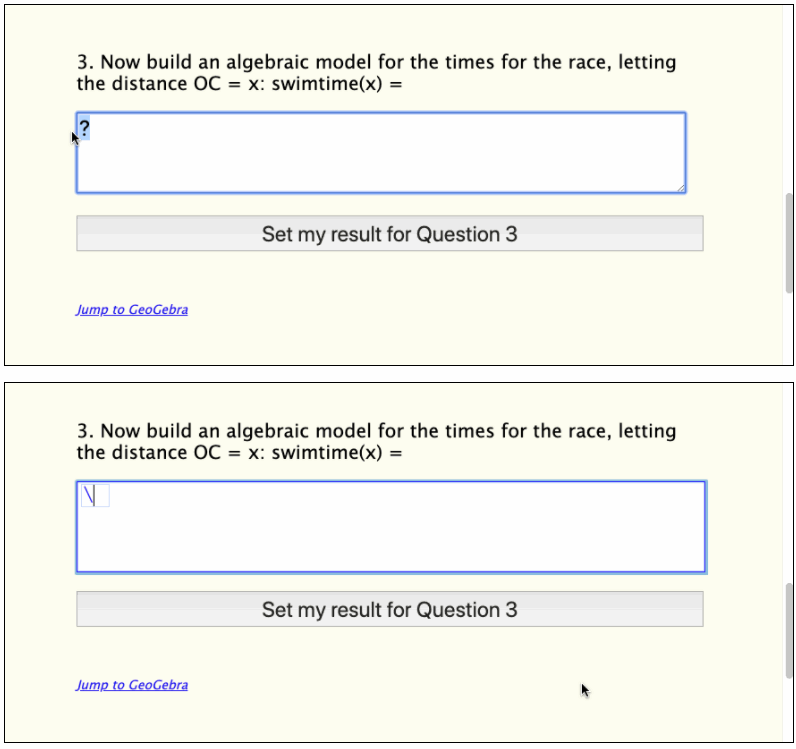I have been having a great time recently updating a collection of free dynamic assessment/exploration tasks that I created a few years back. Not sure whether you would call them algebraic geometry or geometric algebra - I suspect the latter, since the aim is to provide dynamic visual and practical applications for students to build algebraic models in a carefully sequenced and scaffolded way. They seem to make perfect partners for the wonderful tools from Saltire Software, Geometry Expressions and the free browser-based GXWeb. These remarkable tools offer the power of dynamic geometry built upon a computer algebra foundation!
This is a powerful pathway to help students build deep understanding of algebra through interesting, dynamic and practical applications, beginning with firm numerical foundations, using real language to make sense of functions and variables, and offering detailed scaffolding and support throughout the process.
Back to Top
|
Learning to use and to interpret computer-based versions of their mathematics can place additional barriers between our students and the skills and content they are trying to learn. The tasks here support students in entering their mathematics in correct form using MathQuill and results are presented correctly using MathJax.
|

|
Back to Top
And student responses, scores and even times spent on each item can be readily shared with teacher or peers by email. There is even an option to send all this information to a secure class spreadsheet created by the teacher using Google Drive.
From junior secondary algebra (Pythagoras' Theorem, area of a triangle, similar triangles) to seniors (calculus extensions) the tasks currently available offer something for just about everyone.
Back to Top
Interested in creating your own GX online assessment tasks? Study the samples provided here, and then visit the Learn How section for a step-by-step guide - beginners welcome!
